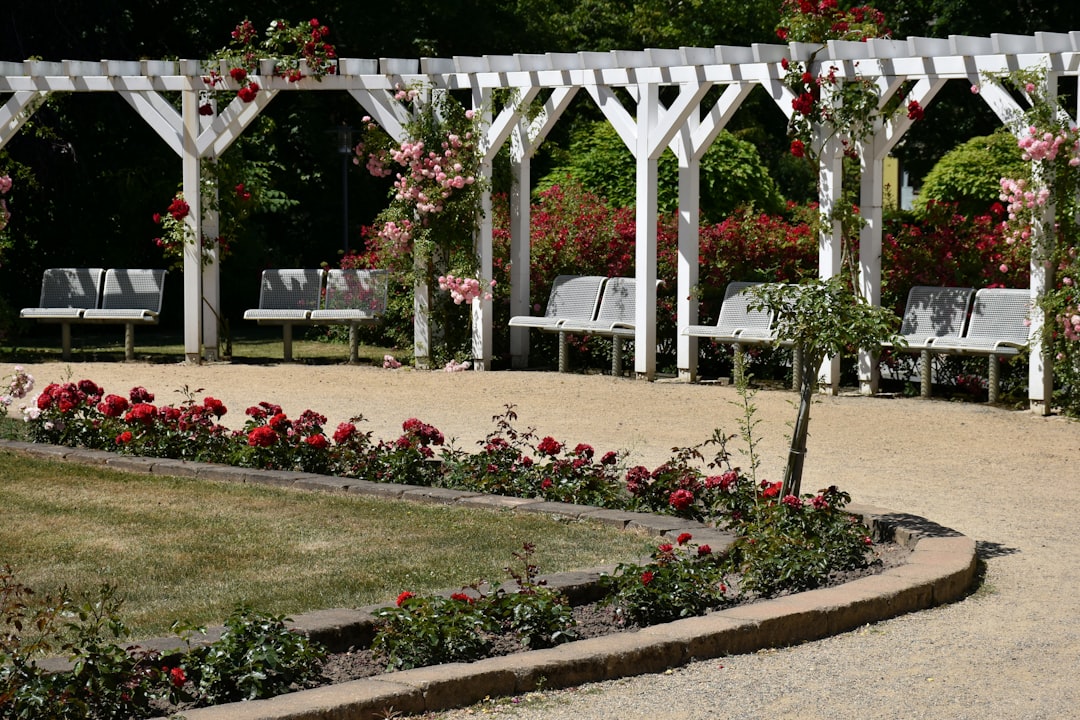The Enchanting World of Pink in Gardens

In the realm of garden design, few colors can rival the allure and versatility of pink. From the softest, almost ethereal blush tones to the bold and vibrant magentas, pink flowers have the power to transform any garden into a captivating oasis. In this exploration, we will delve into the various shades of pink and how they can be incorporated into your garden to make a truly unforgettable statement.
The palest blush pinks are like whispers in the garden. They exude a sense of delicacy and tranquility, creating a serene atmosphere. One of the most popular choices in this shade range is the Prunus serrulata, or Japanese cherry tree. When in bloom, its pale pink blossoms cover the branches like a soft, fluffy cloud. These trees are not only beautiful but also symbolize renewal and the transient nature of life. Planting a Japanese cherry tree in a prominent spot in your garden can serve as a focal point, drawing the eye and inviting contemplation.
Another charming option in the pale pink category is the Dianthus plumarius, commonly known as cottage pinks. These fragrant flowers have fringed petals and a sweet, spicy scent. They are perfect for edging a garden path or filling in gaps in a flower bed. Their low - growing habit and delicate appearance add a touch of old - fashioned charm to any garden. When combined with other pale pink and white flowers, such as Anemone blanda and Leucojum aestivum, they create a dreamy, romantic look.
As we move towards the mid - range of pinks, we encounter colors that are both warm and inviting. The Peony is a classic example. With its large, full blooms and rich, velvety texture, peonies are a favorite among gardeners. They come in a variety of pink shades, from soft salmon to deep rose. Peonies are relatively easy to grow, but they do require a bit of patience as they can take a few years to establish and reach their full potential. Once they do, however, they will reward you with a spectacular display of color and fragrance year after year.
The Rose is another iconic flower in the mid - pink spectrum. Roses have been cultivated for centuries and are available in countless varieties. From the hybrid tea roses with their long, elegant stems and single, perfect blooms to the shrub roses that are more bushy and produce clusters of flowers, there is a pink rose for every garden style. Pink roses can be used in formal rose gardens, mixed borders, or even as standalone specimens. Their beauty is not only visual but also olfactory, as many roses have a delightful fragrance that can fill the air on a warm summer day.
For those who prefer a more intense pop of color, the bright magenta pinks are the way to go. The Salvia splendens, or scarlet sage, is a popular choice. Its spiky, upright blooms in vivid magenta add a splash of color to any garden. Scarlet sage is a tender perennial that is often grown as an annual in cooler climates. It thrives in full sun and well - drained soil and can attract hummingbirds and butterflies to your garden. Planting scarlet sage in groups or as a border can create a bold and eye - catching effect.
Another great option for a bright pink statement is the Gladiolus. Gladioli are tall, stately flowers with large, showy blooms. They come in a range of colors, including some stunning magenta shades. Gladioli are typically planted in the spring and bloom in the summer. They are excellent for cut flower arrangements, bringing a touch of drama and elegance to any indoor space. In the garden, they can be planted in the back of a border or in a dedicated gladiolus bed to create a vertical element and add a burst of color.
When designing a garden with pink flowers, it's important to consider the overall color scheme and balance. Pink can be paired with other colors to create different effects. For a soft, harmonious look, pair pink with white and green. White flowers, such as Narcissus and Hydrangea arborescens, can complement the pinks and enhance their delicate beauty. Green foliage, whether it's the leaves of the flowers themselves or the surrounding shrubs and trees, provides a backdrop that makes the pinks stand out.
For a more vibrant and energetic look, combine pink with purple and blue. Flowers like Verbena bonariensis in purple and Agapanthus in blue can create a striking contrast with the pinks. This combination is especially effective in a cottage - style or wildflower garden, where the colors seem to blend and mingle naturally.
In conclusion, pink flowers are a wonderful addition to any garden. Whether you prefer the subtlety of pale blushes, the richness of mid - range pinks, or the boldness of magenta, there is a pink flower to suit your taste and style. By carefully selecting and arranging these flowers, you can create a garden that is not only beautiful but also a reflection of your personality and creativity. So, go ahead and make a statement with the enchanting world of pink in your garden.